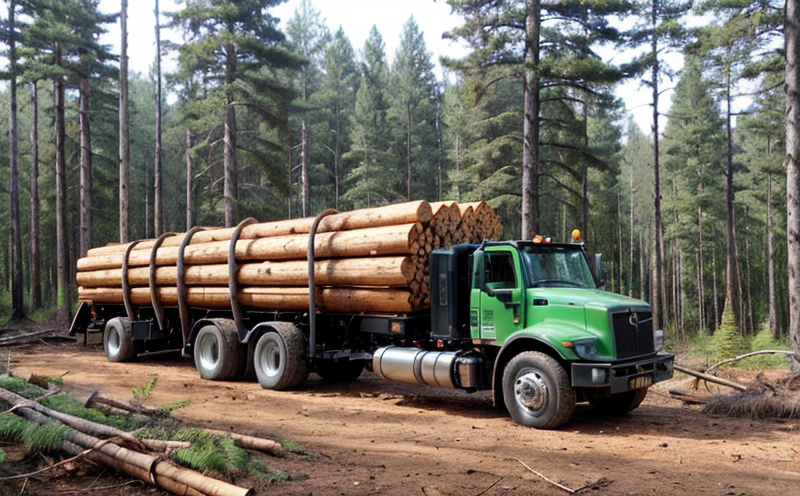Wood Paint Adhesion Testing
The importance of wood paint adhesion testing cannot be overstated in ensuring the durability and longevity of wooden products across various sectors. Whether it is furniture, construction materials, or outdoor fixtures, a strong bond between the paint and the wood surface is crucial for resisting environmental stresses such as moisture, UV radiation, and mechanical abrasion.
In the context of agriculture & forestry testing, especially in forestry products like poles, beams, and cladding boards, ensuring that paints adhere well to these surfaces can significantly enhance their service life. This test helps manufacturers meet quality standards and customer expectations while also complying with international regulations and industry best practices.
The process involves several steps: preparing the wood specimen by cleaning it thoroughly; applying the paint according to specified guidelines; curing the paint under controlled conditions; and finally, testing for adhesion using standardized methods. The type of test used depends on the specific requirements and standards being adhered to. Common methods include:
- Cross-cutting tests
- Adhesion cups
- Tape tests
- Bridge tests
The selection of these methods ensures that the adhesion strength is accurately measured, providing reliable data for quality assurance and compliance. The results are then analyzed to determine if they meet the desired standards.
Understanding the significance of wood paint adhesion testing in forestry products allows stakeholders to make informed decisions about product design, material choice, and production processes. By ensuring strong adhesion, manufacturers can produce high-quality, durable products that meet both performance expectations and regulatory requirements.
Why It Matters
The durability of wood paint adhesion is critical for several reasons:
- Environmental Resistance: Wood exposed to the elements can degrade over time. Strong adhesion helps maintain the integrity of the painted surface, protecting the underlying wood from moisture and UV damage.
- Aesthetic Appeal: A well-adhered paint layer not only enhances the visual appeal but also ensures that the color remains consistent over its lifespan.
- Durability: Proper adhesion prolongs the service life of wooden products, reducing maintenance and replacement costs in both commercial and residential settings.
- Compliance: Adhering to specified standards can help companies meet regulatory requirements and industry best practices.
The wood paint adhesion test is therefore an essential step in the quality assurance process. It ensures that the painted wood meets the necessary durability, appearance, and performance criteria expected by end-users.
Scope and Methodology
The scope of wood paint adhesion testing encompasses various aspects critical to ensuring successful bonding between the paint and the wooden substrate. This includes selecting appropriate specimens, preparing them for testing, applying paints according to specified protocols, curing conditions, and then performing the actual adhesion tests.
For cross-cutting tests, a specific pattern of cuts is made into the painted surface, followed by measurement of how much of the paint remains adhered after being pulled away. Adhesion cups involve placing the specimen in a cup filled with water for a set period and then measuring the amount of paint that detaches from the wood.
Proper preparation of specimens involves cleaning them to remove any dirt or oils, sanding if necessary, and ensuring they are dry before application of the paint. The paint should be applied evenly across the surface in accordance with the prescribed guidelines, which may vary based on the type and quantity of paint used.
Curing conditions must be strictly followed; this typically involves keeping the painted samples under controlled environmental conditions (temperature, humidity) until the paint has fully dried or cured. Once curing is complete, the adhesion tests can begin using one of several methods mentioned earlier.
The results are then analyzed to determine whether they meet the specified standards. If not, adjustments may need to be made in the production process to achieve better adhesion performance.
Benefits
- Enhanced Durability: Strong adhesion ensures that painted wood surfaces resist environmental stresses and maintain their integrity longer.
- Aesthetic Integrity: Well-adhered paint layers contribute to a more appealing appearance, which is crucial for consumer satisfaction.
- Regulatory Compliance: Meeting specified standards helps companies avoid legal issues related to non-compliance with regulations.
- Economic Efficiency: By preventing premature failure of painted wood products, this testing can reduce costs associated with replacement and maintenance.
In summary, wood paint adhesion testing is a vital component in the quality assurance process for forestry products. It ensures that painted surfaces are robust, aesthetically pleasing, compliant with regulations, and economically efficient over the long term.





